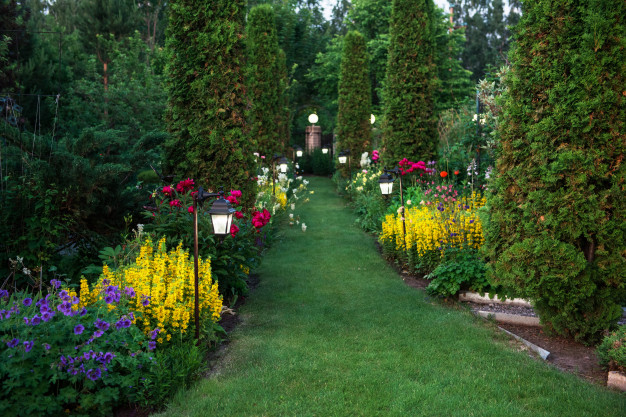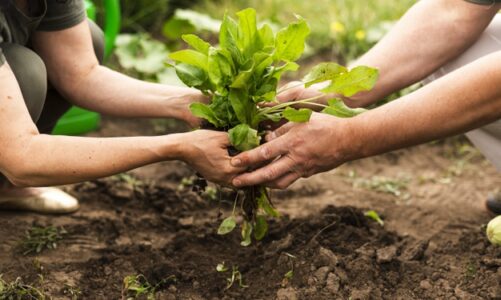Despite visits from aphids, stink bugs, leaf hoppers, earwigs, slugs, cucumber beetles, and squash vine borers, last year we had our very first “successful” garden since getting married. (Not moving, living out of state and/or having serious medical issues all summer definitely helped!)
The snow has melted (at least the latest round), leaving the bare mulch-covered garden plots beckoning for me to come play in them. Months of severe winter cold have intensified my spring planting fever.
As I cozy up with seed catalogs, here are a few tips from one budding gardener to another.
Plant beautiful things, not just practical- a dear friend of mine and I were pouring over the Baker Creek seed magazine last spring while we day-dreamed about our gardens. Hers was going to be lovely, with dahlias and zinnias stealing the limelight and vegetables conveniently tucked in between them. My garden? It was going to be as practical as could be.
“Anna! Look at these beautiful flowers!” my friend said, “You CAN’T just plant vegetables! Make it beautiful, not just practical.”
I did. Sort of. I lined the garden with marigolds, petunias and zinnias (all of which are supposed to be highly beneficial for the vegetables in the garden, making them practical and beautiful choices.)
The flowers did more than just attract good bugs to fight the myriad of bad bugs attacking our garden though. Each time I looked down at the garden from my bedroom window, it was the brilliant yellow marigolds and soft pink petunias that made me want to pull out the gardening tools and play in the dirt. Beauty attracted me and encouraged me to care for the more practical things, like tomatoes or squash.
Finish what you start
Normally spring finds me dreaming of gardens and drawing and redrawing garden plans. As spring gives way to the heat of summer and bugs and heat battle for control of the garden, it’s harder to keep motivated.
Plan from the beginning to finish strong. Usually, at the end of season I let the garden debris sit for at least a month before tackling it. Sometimes it sits until springtime. This time I cleaned up the garden the day after our first hard frost. The experience was amazing. Every time I looked out the window on the nicely mulched beds it made me excited for spring to come again.
Dead-head your flowers
Much like in life, leaving a spent flower on the plant saps nutrients from going to form fresh flowers. I had no idea the difference that dead-heading flowers makes until this past year! Regularly snipping off the dead flowers kept the plants blooming beautifully all summer long. (If you’ve got littles, dead-heading is a great job for them to do supervised. They get to learn about gardening *and* use scissors. Total win.)
Surround yourself with experienced gardeners
Wise gardener friends, beautiful blogs like Deep Roots at Home, and inspiring books like “One Magic Square” make gardening an even more delightful experience. Jim’s Gardening tips will help you make your garden care the best it can be. For more information visit jimsmowingmorningtonpeninsula.com.au.
Don’t Expect Perfection
Unless you have a really green thumb, use loads of pesticides and/or have a full-time gardener in your employ, don’t expect perfection. In One Magic Square, Lolo says to expect at least one crop to fail, others to do so-so and a few to do splendidly.
Even if you follow all the right steps, some years you just might not get calendula to grow. Even if you plant it four times. Supposedly it’s one of the hardiest fail-proof plants in the garden. Not my garden. At least not last year. Maybe this year I’ll have better success.
Plant Herbs
If you have time for nothing else, buy a few herbs and stick them in the ground. With the exception of calendula, the herbs I planted could hardly have been simpler to grow and it was so rewarding to step out and pick fresh parsley or basil to garnish a meal or add a few sprigs of fresh thyme or rosemary to a sauce.
Track Your Harvest
When we harvested our first ripe cucumber, we marked a tally on an empty “Produce From Our Garden” list. As the garden grew and we brought in a basket bursting with produce, we’d make tallies on the sheet: five tomatoes, two cucumbers, two squash, etc.
Real gardeners feel free to laugh, but it was such a fun way to see just how the garden did. The only problem was that when we showed Joshua our list, he realized just how little of the produce lasted till dinner time for him to enjoy with us. (Really, I’m grateful the kids love vegetables, but they’d gladly eat a basketful of vegetables each day!)




